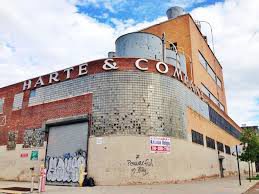
In 1954, Brown v. Board of Education showed America that schools separated by race enabled institutional inequality, forcing the integration of schools. In 1965, Medicare showed America the same thing but in the nation’s hospitals.
Medicare, the federal health insurance program for seniors and disabled individuals, celebrates its 50th anniversary on July 30. It also marks nearly half a century of desegregated hospitals in America. The program, created in the midst of President Johnson’s “Great Society” campaign, transcended its purpose of widening insurance access to these populations; this program was a radical shift in healthcare delivery to minorities.
“It flew in the face of 50 years of history of the federal government had provided for this construction of segregated hospitals,” said David Barton Smith, Emeritus Professor of Health Services at Temple University.
The professor and author of Health Care Divided: Race and Healing a Nation said by enforcing desegregation, Medicare began to meaningfully address the gross racial disparities racism caused in health care.
Before 1965, healthcare was drastically different for Black people all over the U.S., especially in the South.
“Healthcare in the south and the north was segregated and access for blacks was quite limited. In many communities, blacks had no hospitals to go to,” Smith said. “They were excluded all together.”
The federal Social Security law as it stood prior to the Medicare amendment could not enforce racial equality. Title VI in the law stated that hospitals could not discriminate while simultaneously taking federal funds, but it had no way to ensure that was happening.
“It wasn’t enough because Title VI had no enforcement mechanism, no staff made available to enforce that requirement,” Smith said. “ It relied on a complaint process and complaint process are very difficult to use.”
Smith said the advocacy role that Black doctors and nurses took to change the legislation was key to the creation of Medicare. They collected complaints and lobbied in local NAACP offices push for an enforceable law.
“If it hadn’t been for the black medical activists, there probably wouldn’t have been a Civil Rights Movement at all. They were the ones in the Black communities in the South that were insulated enough from retaliation from the white power structure that they could act as advocates for the patients they served,” Smith said.
After Medicare was passed in 1965, the federal government had one year to guarantee equal access to care and facilities across the country. This meant inspecting every hospital and health care facility in the country.
Nine months later, there was still no plan from the government on how to accomplish this task. By the middle of 1966, John Gardner, then Secretary of Health, Education and Welfare, decided his administration would have to recruit government employees to do the job.
Garner was initially worried about interest, but 700 employees, many of whom were civil rights activists themselves, agreed to volunteer. They were trained for two days before fanning across the country to inspect about 3,000 hospitals in less than three months.
Segregated hospitals and states were faced with two choices: to stay segregated and receive no Medicare money, or to take the Medicare money and integrate. In some facilities, Medicare funding could total up to a quarter of a hospital’s budget.
The financial repercussions made the social policy work. “Nobody talks about it but there’s a Golden Rule in health care: the ones that have the gold, rule,” Smith said.
Many stories of these inspectors and the desegregation process are being collected for a documentary set to come out in 2016, when Medicare celebrates 50 years since its implementation. Barbara Berney, Director of the Health Policy and Management Program at Hunter College, a program at the CUNY School of Public Health, is producing this film.
Tune in to HealthStyles on WBAI, 99.5 FM, NY on July 30th, at 1pm Eastern to hear more from Helina on Medicare’s role in the Civil Rights movement.




